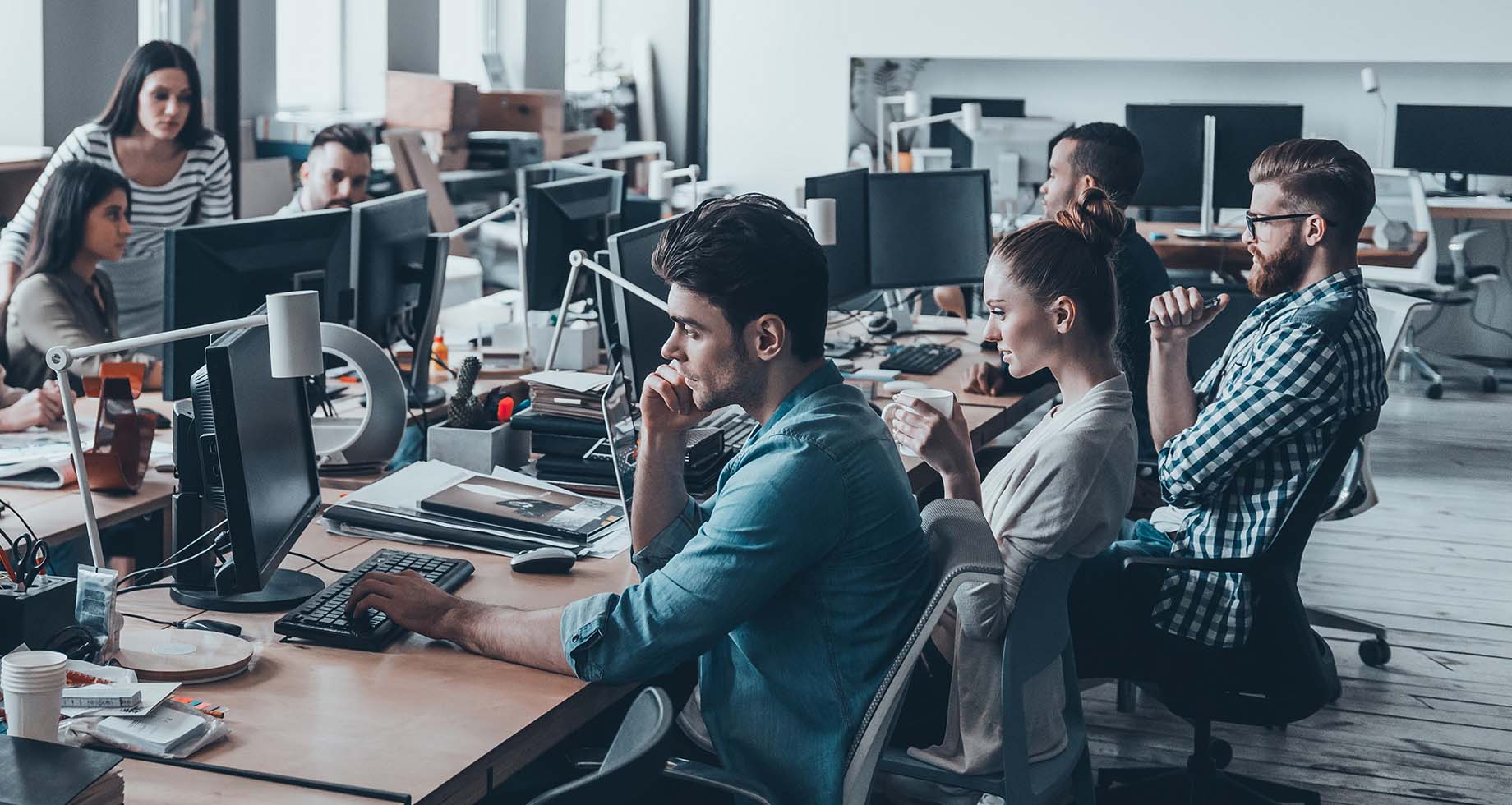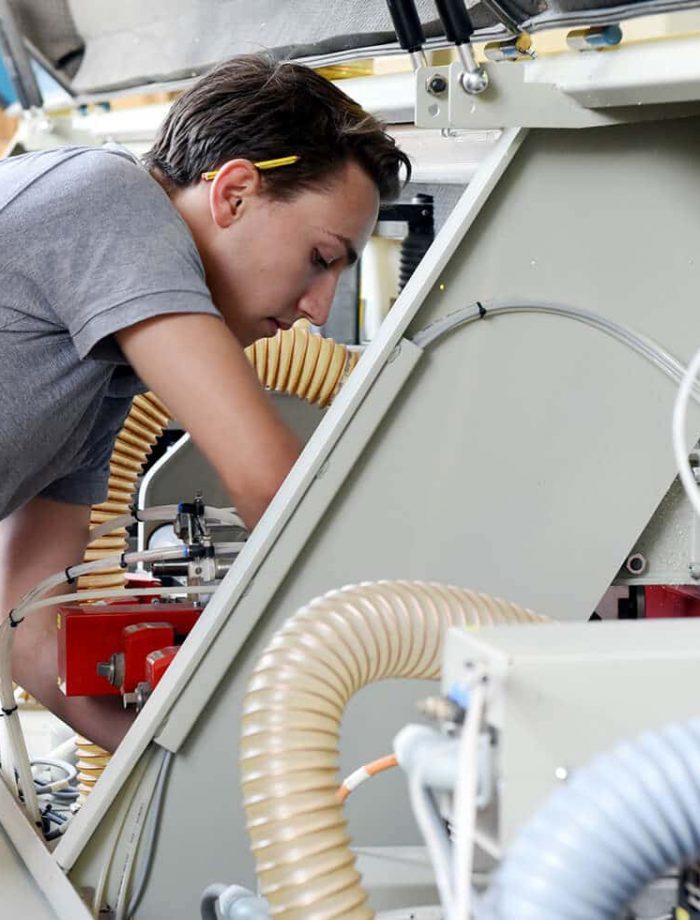Now that many B2B businesses have had their first experiences of e-commerce, it is time for a reality check; Not all sales take place online. Of course, simple orders can easily be placed by customers via a self-service portal, but larger and more complex orders call for the knowledge and experience of your account manager/your sales rep.
In the case of mid-market companies, we often see that online orders run smoothly, but that when it comes to offline sales, where account managers draw up the quotations, the process is less slick.
Sales teams still work with a variety of systems (Excel, ERPs), and they email quotations and adjustments back and forth with their customers. Small and large errors are just waiting to happen and the process is not transparent – and certainly not fast.
Furthermore, the two funnels are never combined, which means that no total picture of the customer is available. Because the information obtained via the sales channel is stored in a different place from the online sales information. I will explain shortly why this is a nuisance.
One digital commerce platform for all sales activities
As a sales organization, you want to be focused on offering your customers and prospects the best possible service. That is how you can increase your turnover and develop and retain loyal customers.
So, it is a great shame to spend a lot of time processing orders and fixing mistakes. Moreover, a cumbersome and time-consuming order process may even put customers off.
A better approach is to work with your customer in the same system. Customers are presented with their quotations in an attractive, clear and personalized portal. Sales personnel draw up quotations in the same system. A closed and fault-tolerant application.
The advantages of such an approach are numerous.
Contented customers
If you can present your quotations to your customers quickly and accurately, customer satisfaction will increase. Nothing is more irritating than receiving quotations containing errors. But it is even worse if you keep on emailing about a quotation and more errors keep on cropping up.
In addition, customers like to be able to see a complete overview of their order history. Online purchases, but also offline purchases. So, offline and online order history combined in one overview. The same applies to invoices, the status of ongoing orders, and outstanding quotations. This prevents surprises and unnecessary pressure within inside sales due to questions from customers.
No more endless emailing back and forth
This way the account manager makes his/her quotation directly available in the customer’s portal. The customer can then easily accept by clicking on the order button. If your customer is not yet completely happy with the quotation, he can reject it with an accompanying comment. This prevents endless emailing back and forth, which only makes it increasingly unclear what exactly the latest version of the order or bill of material actually was.
All the required information is available
If the e-commerce platform is connected to the ERP (for example, Microsoft Dynamics or SAP) and also to your suppliers (E-procurement), all the required data is available. Because you have the customer data (with specific pricing agreements), product data (with purchase prices per supplier), and inventory positions. All the information in one system that you need to quickly draw up a good quotation. And with connections to your suppliers (real-time purchase prices), you have continuous insight into your margins.
Less work
A B2B e-commerce platform with the connections described above takes away a lot of your work. Simple orders can be done by your customers themselves via the Customer Experience Portal and (if desired) they can be automatically purchased and accounted for: zero-touch ordering. The order is delivered by your supplier to your customer with no manual interventions.
For more complex orders, the customer calls the account manager. He makes up the configuration directly in the quotation tool of the e-commerce platform. There’s no need to look things up in other systems; all the information is provided in context.
By means of an approval workflow, the sales manager can grant or refuse approval for the quotation in the system before it is made available to the customer. We see time savings within order admin adding up to 3 FTE’s. This time can be used to look for new opportunities with your existing or new customers.
Your margins are monitored
We link with your suppliers and/or inventory. This way you always work with the correct purchase price. In fact, if the same products are available with multiple suppliers, you can easily select for each line of the order based on the most advantageous purchasing terms (taking into account the inventory position and delivery times). This way you can select the best possible options to increase your margins.
You don’t make mistakes anymore because your customer is the last person to check the order and places the order himself. Correcting faulty orders becomes a thing of the past. This is one of the key drivers for loss of margin, low customer satisfaction, and disappointing results in general. Many of our clients previously had a significant monthly error rate calculated in with their old working method.
Data is at the heart of everything; a gift for your marketing
All your transactions with your customer are available in one place. This is ideal for cross and upselling. Because you know when licenses expire and products need to be replaced. In addition, every quotation can be supplemented with logical extras.
By using integrated email marketing, you automatically send emails with accessories, additional products, or options for replacement.
Data is at the heart of everything; a gift for your management
Are we selling more or less to our regular customers? How long does it take on average to get a quotation to the customer? How long before it is accepted? All the information is available. By linking to a BI tool you can create every desired type of dashboard.
Sales teams have time to make sales again
When sales personnel are busy processing orders, they are not talking to (potential) customers. Giving advice and guidance on a purchase, or making acquisitions. By linking the offline and online sales directly to each other, you don’t just save time and prevent errors; you also increase the chance of achieving turnover growth.
An important extra benefit is that your sales team will find their work much more enjoyable. They have less admin work, so more time to achieve their targets.
Conclusion
Now that you, as a B2B organization, have embraced e-commerce, it is time to streamline your entire sales process. The advantages described above are evident. With Propeller we supply the required functionalities out of the box and it is worth the effort to draw up the business case together with us. We will be pleased to help you calculate how much you can save, what your turnover growth could amount to, and what a connected offline and online sales process can mean for your customer satisfaction.







